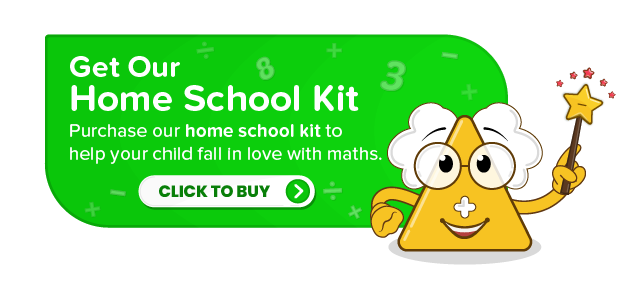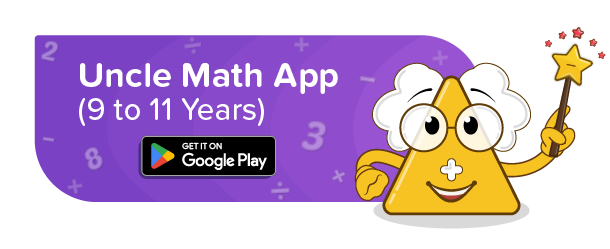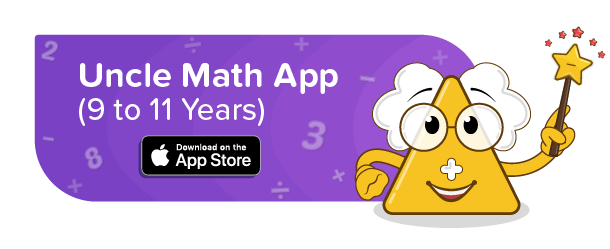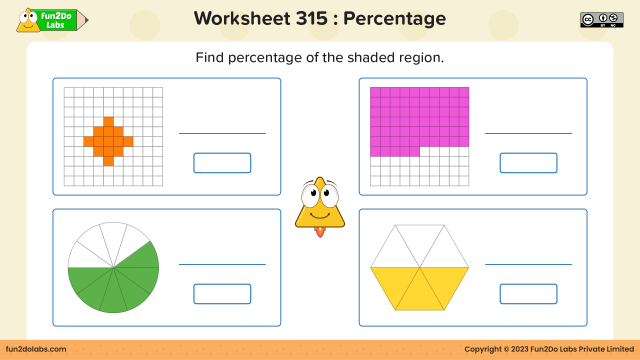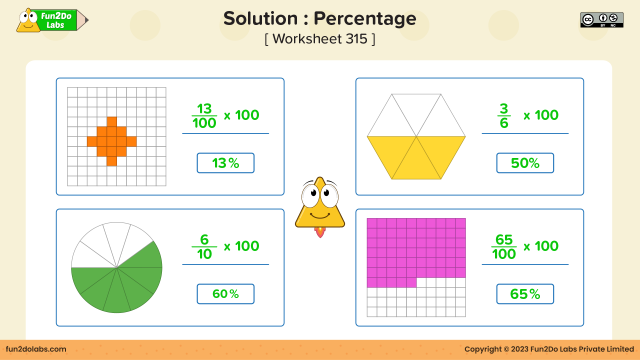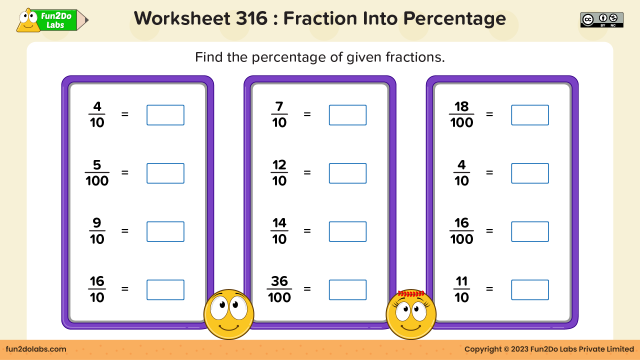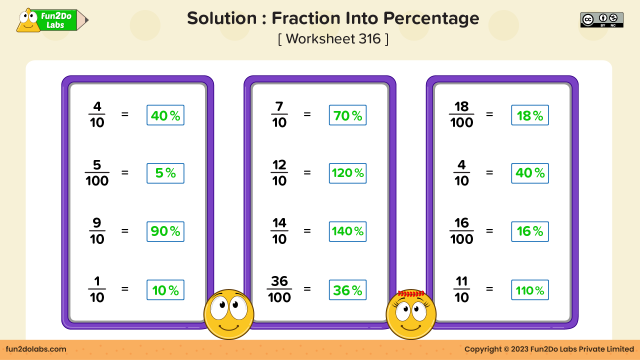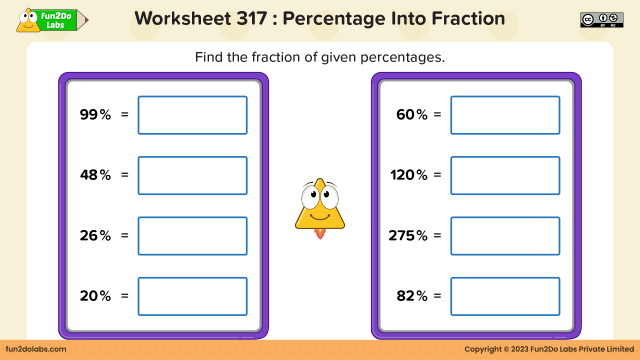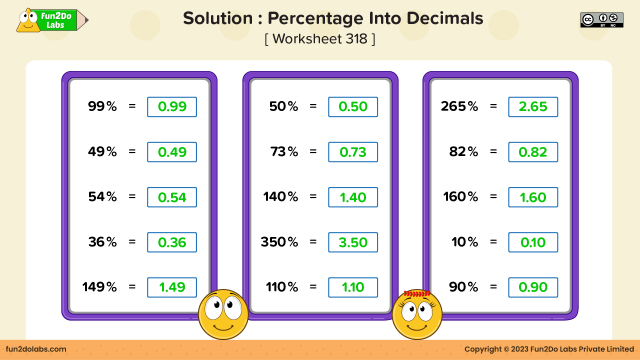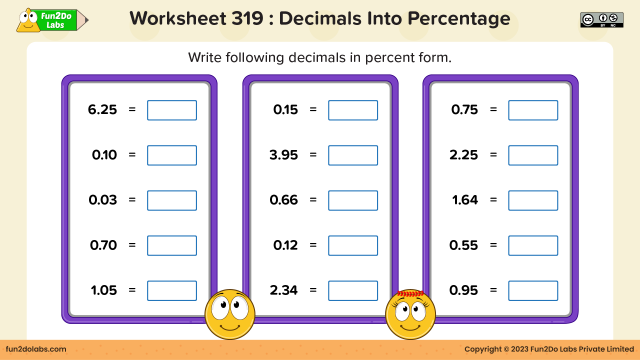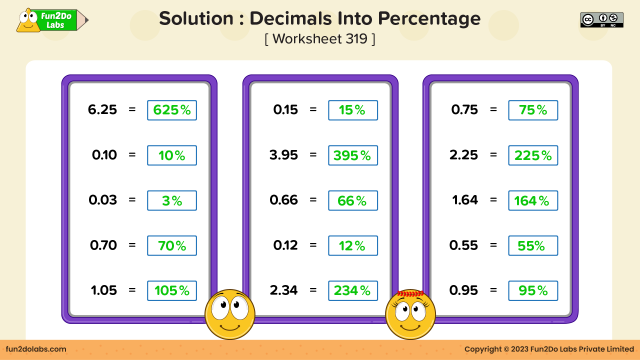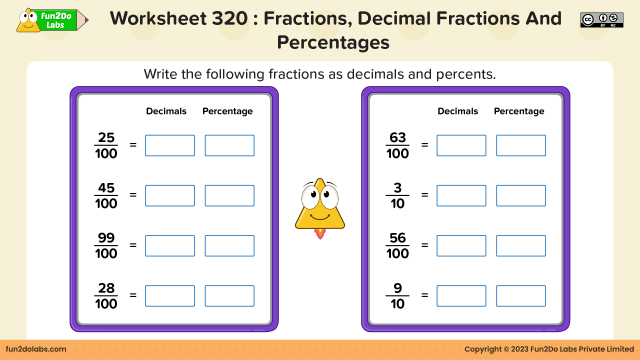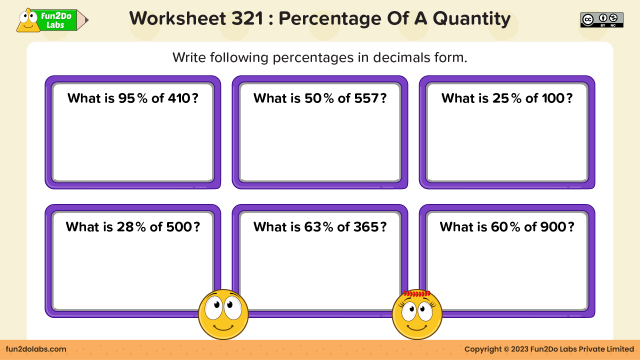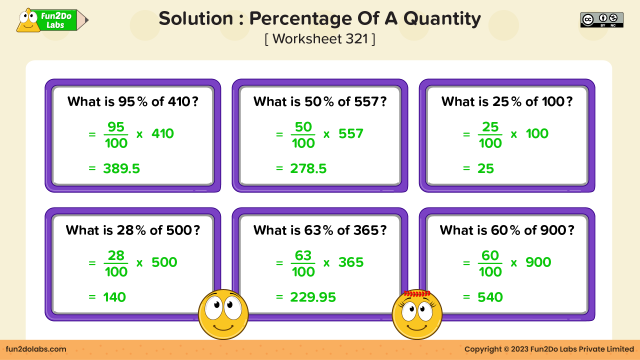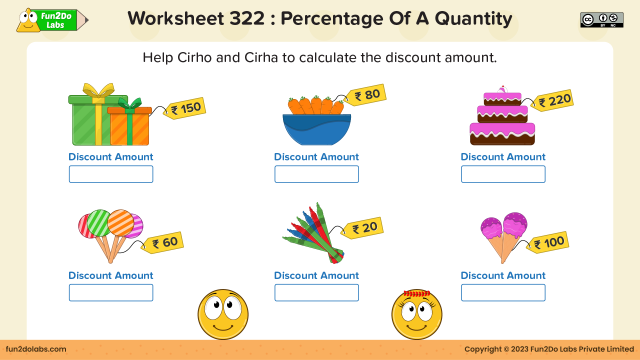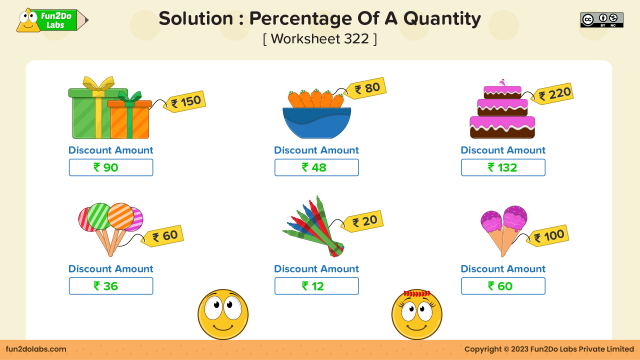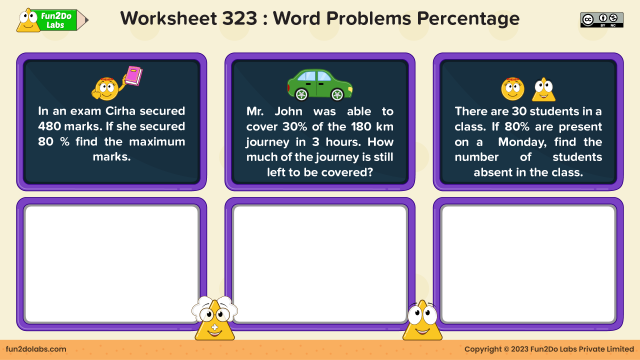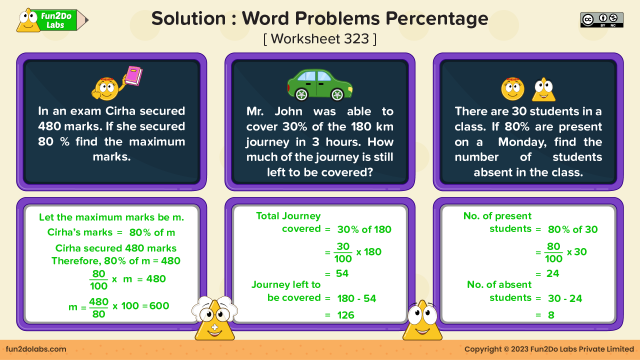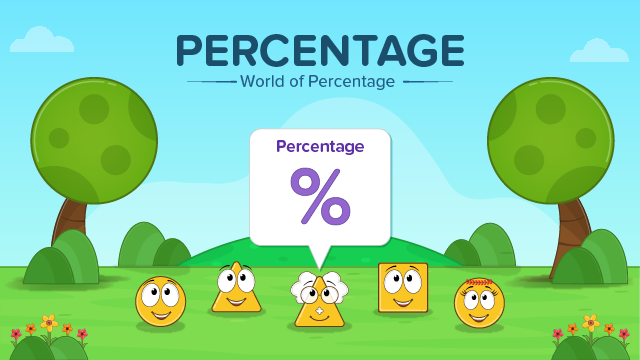
In this guide, we will embark on an exciting journey to learn about percentages. These help us understand parts of a whole in a simple and relatable way. Let’s dive in and discover the world of percentages together!
Explain that a percentage is a way to represent a fraction or a part out of 100. Emphasize that the word “percent” means per- centum or “per hundred.” In mathematics, these are used similar to fractions and decimals to show parts of a whole where the value of the whole is always taken as 100. These are denoted by the symbol %. For example, if 60 students are enrolled in a class and all 60 are present on a particular day, then 100% of the class is present.
Use relatable examples, such as dividing a pizza into slices, sharing a bag of candies, or filling a jar with marbles, to help children grasp the concept of parts out of a whole.
Learning percentage is important to understand the financial features in everyday life as discounts in shops, interest rates of banks, etc are expressed in percentages.
Visualizing Percentages :
The concept of percentage can be better taught to kids by using pictures. Pictorial representation makes the concept of percentage clear to kids.
Introduce visual aids, such as pie charts or grids, to represent percentages visually. Show examples where a whole is divided into equal parts, and shade the appropriate number of parts to represent the percentage.
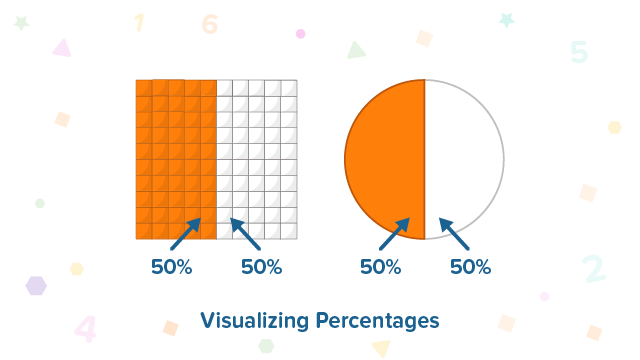
Percentage Formula
The percentage formula is used to find the share of a whole in terms of 100. Using this formula, one can represent a number as a fraction of 100. Percentage = (Value/Total Value)×100
Example: 2/5 × 100 = 0.4 × 100 = 40 per cent
Establish Relationship Between Fractions, Decimals, And Percentages
Fractions, decimals, and percentages are all different ways to depict the comparison of a portion to a whole. For example, half of something can be depicted in 3 different ways ½ in fractions, 0.5 in decimals, and 50% in percentages.
Calculating Percentage From Fraction With Denominator As 100 :
Fractions that have a denominator as 100 like 25/ 100 or 75/100, already exist in percentage form as 25% or 75% respectively.
Calculating Percentage From Fraction With Denominator Not As 100 :
- Multiply the given fraction by 100.
- Simplify the product obtained into the lowest possible number.
- Put a symbol of percentage.
For example :
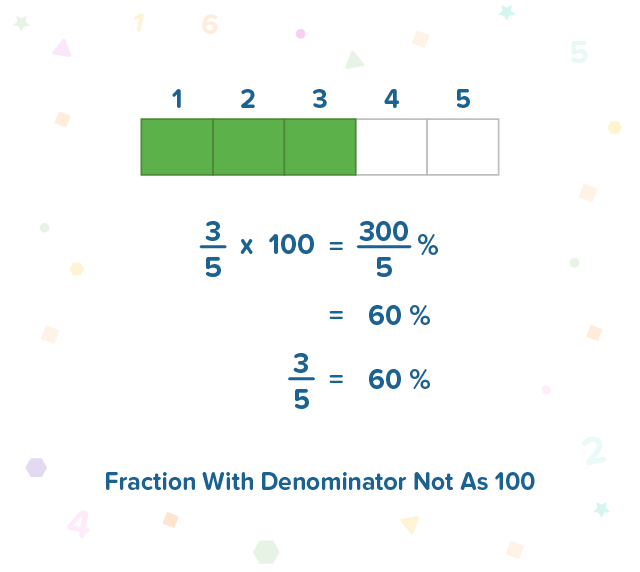
Calculating Percentage From Decimals :
- Given decimal number is multiplied by 100.
- When decimals are multiplied by 100, the decimal simply moves 2 places to the right.
- The “%” symbol is added to the above answer.
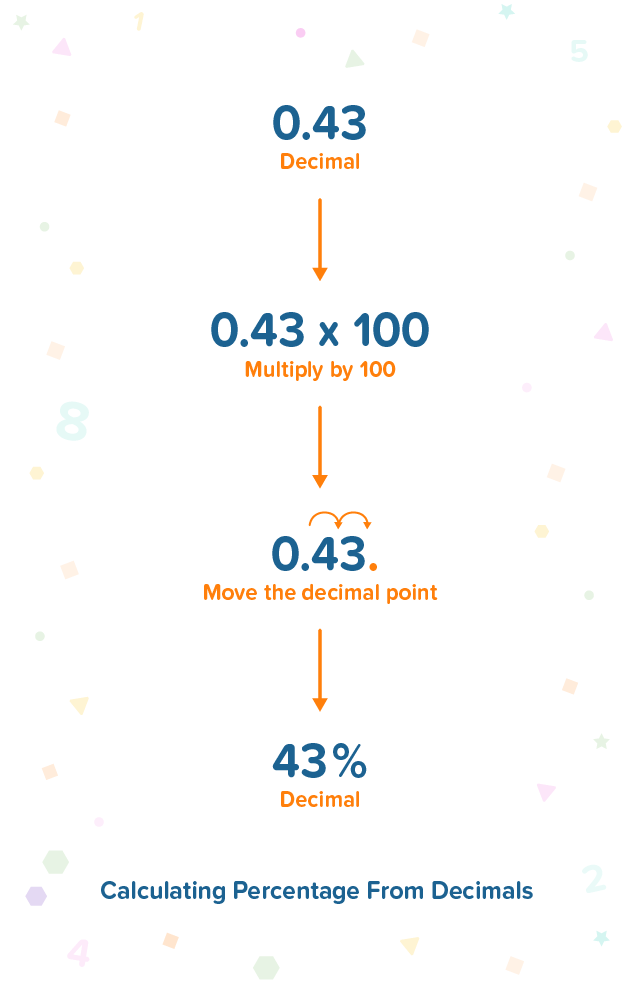
By understanding percentages, students can better comprehend the relationship between parts and wholes. Encourage them to practice and explore percentages in various contexts to strengthen their understanding.
Regular practise and reinforcement will help kids develop a strong foundation in percentages and lay the groundwork for more advanced concepts in the future.
Teaching percentage with kid-friendly, clear, and easy-to-understand posters from Uncle Math School by Fun2Do Labs :
Ignite kids’ curiosity with engaging stories for role play and skits, making the learning of this concept an exciting and effective experience. Teaching percentage through stories from Uncle Math School by Fun2Do Labs :
Learning percentages can be made enjoyable by incorporating interactive games and activities.
Beads Percentage Fun:
Children love to play with colourful beads. This activity is the best way to practise calculating percentages.
Distribute a handful of beads to all the kids. Let them calculate the percentage of beads of all different colours.
For example, if a total of 20 beads are given to everyone, Kids need to find out the percentage of red, blue, and green beads of the total beads given to them by using the formula:
Help your kids practise the type of fractions with interesting and engaging fun worksheets and solutions from Uncle Math by Fun2Do Labs.


